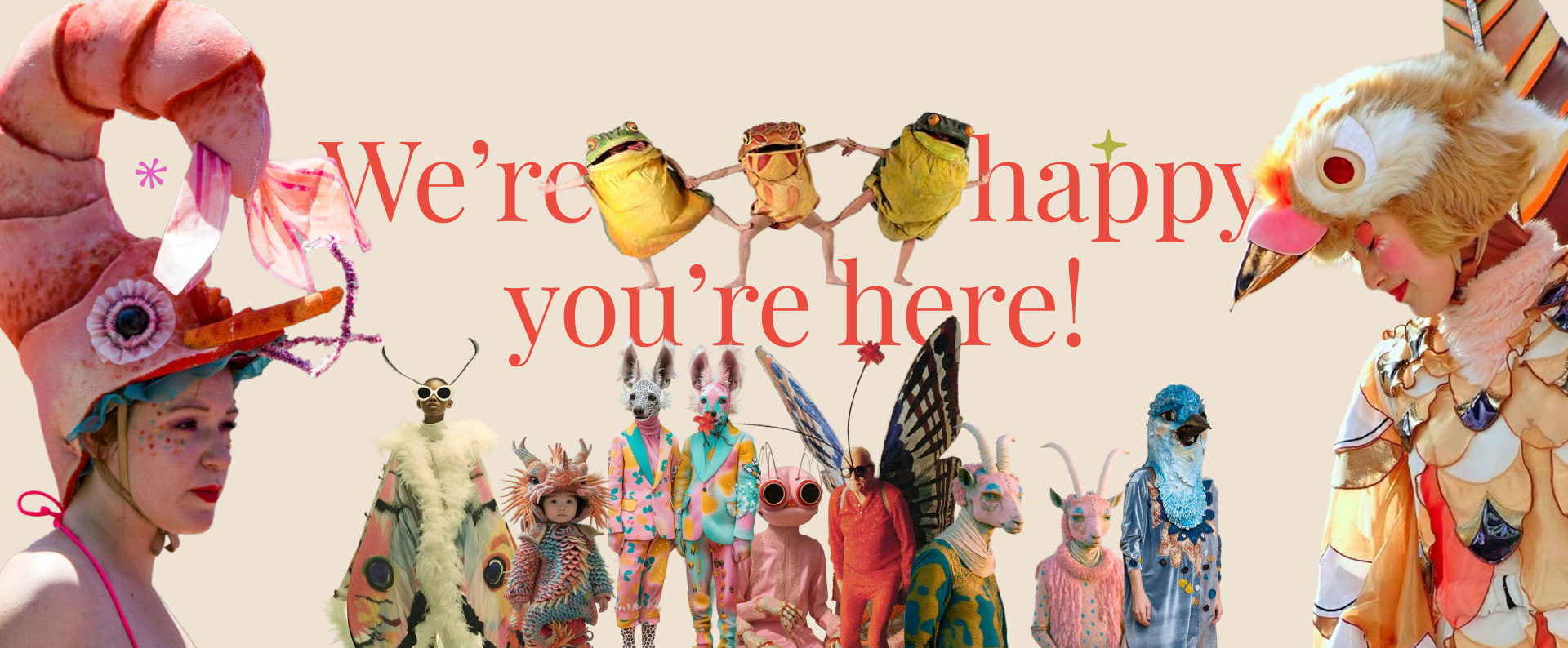🧭 Worldbuilding with play
What would it look like to build a world where play isn’t a break from life—but the very foundation of it?
I’m on an odyssey to expand my experience design practice. January marked the beginning of a transformative chapter in my design career as I joined the Odyssey Works residency program. If you missed my announcement you can learn more about that here:
Designing for play
What could a world look like if play were the thing valued most?
Not the kind of play that's optimized, monetized, or confined to a weekend afternoon when you've finally "earned" rest.
I'm talking about real play—purposeless, delightful, expansive. The kind that makes you lose track of time. That softens your shoulders. That awakens some curious, alive part of yourself you haven't heard from in a while.
That's the energy my fellow residency students and I channeled in our recent worldbuilding assignment.
Enter: Playtopia—a fictional, magical realm where joy measures success, and the richest person is the one having the most fun.
In Playtopia, when a rainbow appears in the sky, it's not just a pretty view—it's a signal. People drop everything and a spontaneous festival begins. No planning. No permission. Just pure collective delight.
While we couldn’t create the entirety of a new world in just one week, we focused on the core foundational aspects of world building: place & physics, population, myth & history, and aesthetics & material culture.
Place & Physics
Playtopia’s physical world is built for wonder.
The environment moves with the full color spectrum—surfaces that shift, stretch, or bounce depending on the mood and movement of those nearby. Gravity isn’t fixed; it flexes. Some areas let you float gently mid-air, while others ground you for cozy, cocoon-like play.
Even the laws of physics respond to emotion. In moments of pure joy, laughter becomes bubbles of light, and delight ripples outward in shimmering color auras.

Playtopia thrives on a gift economy—where joy is given freely, without expectation of return. Sharing a silly invention, offering an impromptu dance, or crafting a personalized game for someone else… these acts aren’t transactional; they’re generative. Joy given is joy grown.
In this way, value circulates through acts of generosity and delight, not accumulation. In addition to this joy capital, the ability to envision and create new possibilities would be a highly valued asset. Imagination banks like the Jolly Stash, are where citizens exchange playful ideas like currency—depositing dreams, withdrawing inspiration.
Population
Meet the Parchisi People—a vibrant community of imaginative, collaborative citizens who believe joy grows when it’s shared.
In this society, “work” is a form of creative engagement. There’s no slog, no grind. Instead, people pursue curiosity, expression, and collaboration. Skills are developed through playful experimentation, and innovation flourishes without fear of failure.
The Gooberment
Yes, you read that right.
The Gooberment is Playtopia’s governing body—seven joyful branches designed not to regulate, but to nourish: creativity, delight, and collective care.
The seven branches include:
R 🌈 Rainbow Keeping
Custodians of the vision of fun and culture of play
O 🎨 Outlining & Organizing
Activity design and zoning for spontaneous happenings
Y 🥚 Yeast, Yolk & Yam
Guardians of food, environment, and joyful production
G 🐡 Gwerhouse & Transportation
Managers of fun tools, archives, and magical logistics
B 🪀 Bruise Management & Development
Health and safety (also: Director of the “No Corners” program)
I 🧒 Initiation
Overseeing education and Merriment Academy for Joyous Living
V ✨ Vagary
The Council of Spontaneity & Serendipity – Secret agents of surprise and delight
Aesthetics & Material Culture
The Parchisi People wear wildly joyful outfits—iridescent overalls, mushroom hats, jelly shoes, and garments that shimmer with mood. Some don feathered capes gifted by birds or patterns inspired by fish schools, making everyday dress a celebration of joy
The built environment feels like a hug: fluffy, rounded, bouncy, soft.
Ingrid Fetell Lee writes in Aesthetics of Joy,
“We all have an innate drive to play… and the most playful shapes—the ones found in hula hoops and beach balls, carousels and merry-go-rounds—are circles and spheres.”
Research shows our brains relax around curves. So in Playtopia, joy isn’t just a vibe—it’s embedded into the very architecture.
How might our world shift if we treated play not as a break from life—but as the blueprint for it?
While whimsical and (intentionally) silly, this project left us wondering: what if we really could design systems that center delight?
What if expression, imagination, and play weren't things we squeezed in after the "real work" was done—but instead formed the very foundation of how we live and contribute to our world?
It's not every day you get to lose track of time designing a dreamlike place.
So I'm curious...
🌀 When was the last time you lost track of time doing something just for fun? And what might change if you treated that as the thing that matters most? 🌈
NOTE: This work was done in collaboration with Pablo Azuela and Elham Koukabi. For this assignment we used imagery both sourced from Pinterest, collaged, and generated via AI.
More on designing for play
The book, “Joyful” by Ingrid Fetell Lee
Faisal Risq’s article, “Embracing Play as the Core of Design.”
on Exploring Joy, Reimagining Resilience’s Work & Play GuidesThis fun game 🌈 HUES & CUES game discovered by
on :Do you have other playful resources to share? Please add them in the comments!












Count me in!!!! What a gorgeous vision and made me realize I cannot remember the last time I lost track of time in play.
I meant to take a photo but never did, but when I was in London earlier this year, there were huge ads for Hues and Cues in the tube stations, loved seeing (colorful) play front and center. Here's another great resource from RADAR on A More Play-full Future: https://play.radardao.xyz/